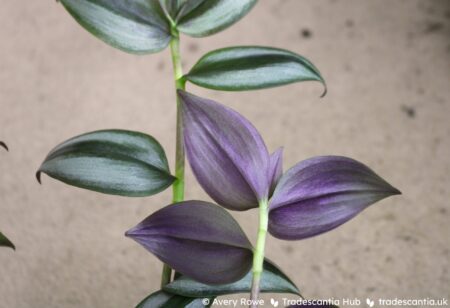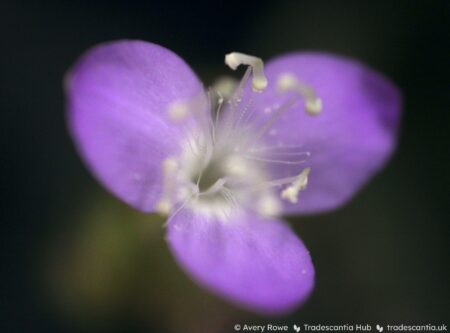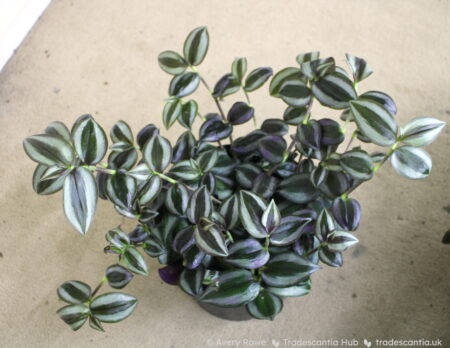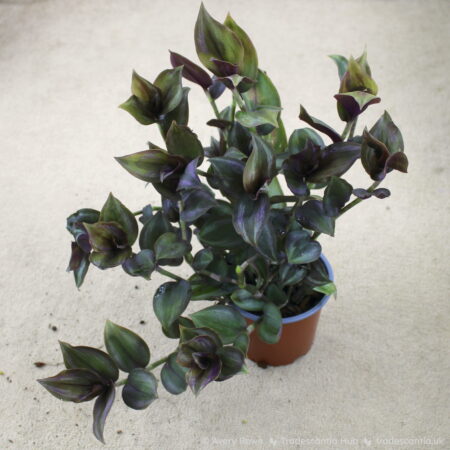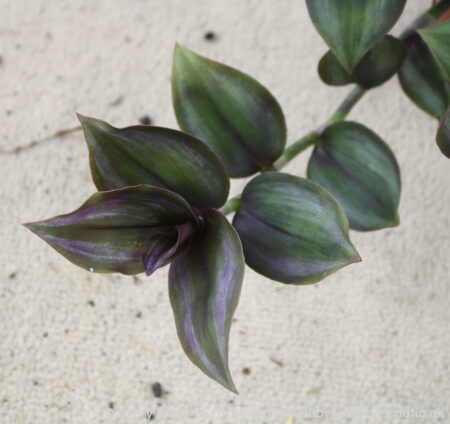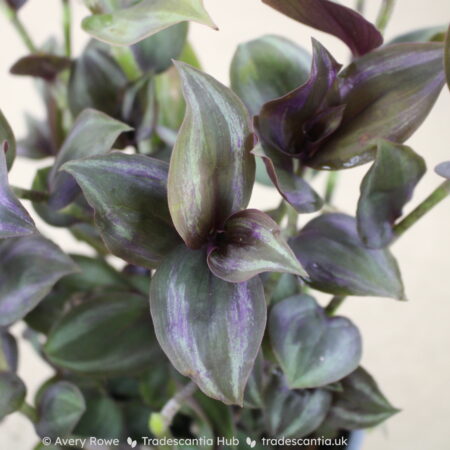Details
| Full name | Tradescantia zebrina ‘Little Hill’. |
| Name status | Accepted, the valid name for a unique cultivar. Established with a description by Hatch (2022). Also known as:
‘Little Hill’ is the most widely-used name, so it is now accepted for this cultivar. |
| Origins | Unknown. |
| Classification | The species Tradescantia zebrina is sometimes labelled with its botanical synonyms Zebrina pendula and Cyanotis zebrina. |
| Legal protection | None. |
| Availability | Mass-produced and available from many nurseries, sometimes under its various trade names. |
Description
Preserved as a herbarium specimen (“Tradescantia zebrina ‘Little Hill'”, 2022).
Described with reference to the RHS Colour Chart (6th Edition: 2019 reprint).
The entire plant can vary its appearance dramatically in different conditions – changing in growth habit, leaf shape, size, and colour. It’s impossible to cover every possible variation, but this general summary describes a typical healthy plant.
| Species | Tradescantia zebrina. |
| Growth habit | Stems initially grow upright but soon start to sprawl and trail out of any container. |
| Foliage | Stems are 4-6mm wide, with internodes 3-7cm long – usually longest at the base and becoming more compact towards the ends of growing stems. The colour ranges from strong yellow green (144B) directly above nodes, to greyish purple (N77A) or dark greyish yellowish brown (N200A) directly below them. All stems are dotted with lighter green freckles and completely hairless. Leaves are slightly asymmetrical pointed ovals, 6-9cm long and 3-5cm wide, smooth except for a few hairs at the top of the sheath. Each half of the leaf has a stripe running its length, taking up 30-50% of the total width. On newly-matured leaves, the base colour of the upper surface is dark greyish green (N189A) in moderate lighting, darkening to greyish purple (N77A) in intense light. The stripes are greenish grey (188A) or light grey (191C) with a metallic sheen. In intense light the stripes become streaked or completely covered with dark purplish grey (N187B) or dark purple (79C). As the leaves age, the base colour lightens to moderate olive green (146A), and any purple on the stripes fades slightly. Newly-matured leaf undersides are dark greyish purple (N92A) to dark purplish red (N79A), fading to greyish reddish purple (N77C) with age. Leaf sheaths are moderate yellow green (147D). |
| Flowers | Flowers are 10-15mm across. The petals are strong purple (N80B) to brilliant purple (N81C). The centre of the flowers, stamens, filaments, and anthers are white. |
References
Brickell, C. D., Alexander, C., Cubey, J. J., David, J. C., Hoffman, M. H. A., Leslie, A. C., Malécot, V., Jin, X. (2016). International Code of Nomenclature for Cultivated Plants. PDF link.
Hatch, L. (2022). Commelinaceae: A Guide to Modern and Historic Cultivars.
Tradescantia zebrina ‘Little Hill’. (2022). [Herbarium specimen, barcode WSY0168493]. RHS Wisley Herbarium.

